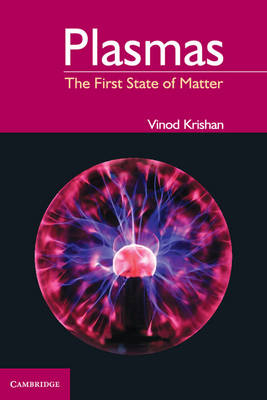
Plasmas
The First State of Matter
Seiten
2014
Cambridge University Press (Verlag)
978-1-107-03757-1 (ISBN)
Cambridge University Press (Verlag)
978-1-107-03757-1 (ISBN)
Plasma is the first state of matter from which three other states have evolved. The book explores a variety of plasmas, explains how they can be made and kept, helps understand the waves they support and elaborates on the relation between plasmas and the coherent and incoherent radiation they produce.
Most astronomers believe that the universe began about 15 billion years ago when an explosion led to its expansion and cooling. The present state of the universe compels us to believe that the universe was extremely hot and dense in its infancy. In the beginning there was intense radiation. The photons produced equal amounts of matter and antimatter and a plasma soup of particles and antiparticles was present. Plasma is the first state of matter from which all the other states originated. This book discusses the diversity of cosmic and terrestrial plasmas found in the early universe, galactic and intergalactic media, stellar atmospheres, interstellar spaces, the solar system and the Earth's ionosphere, and their observability with the most recent telescopes such as the Chandra X-ray telescope and gamma ray telescopes. It deals with different ways of creating plasmas such as thermal, pressure and radiative ionization for laboratory and cosmic plasmas.
Most astronomers believe that the universe began about 15 billion years ago when an explosion led to its expansion and cooling. The present state of the universe compels us to believe that the universe was extremely hot and dense in its infancy. In the beginning there was intense radiation. The photons produced equal amounts of matter and antimatter and a plasma soup of particles and antiparticles was present. Plasma is the first state of matter from which all the other states originated. This book discusses the diversity of cosmic and terrestrial plasmas found in the early universe, galactic and intergalactic media, stellar atmospheres, interstellar spaces, the solar system and the Earth's ionosphere, and their observability with the most recent telescopes such as the Chandra X-ray telescope and gamma ray telescopes. It deals with different ways of creating plasmas such as thermal, pressure and radiative ionization for laboratory and cosmic plasmas.
Vinod Krishan is Visiting Professor at the Raman Research Institute. She was previously Senior Professor at the Indian Institute of Astrophysics, Bangalore, and has held visiting positions at the Lawrence Berkeley Laboratory, INPE, Brazil, the University of Tokyo and Nagoya University. Her major research interests are in the areas of space and astrophysical plasmas.
List of illustrations; Preface; 1. The plasma universe; 2. Plasma basics; 3. Plasma confinement; 4. The waving plasmas; 5. The radiating plasmas; 6. Supplementary matter; Select bibliography; Index.
| Erscheint lt. Verlag | 6.3.2014 |
|---|---|
| Zusatzinfo | Worked examples or Exercises |
| Verlagsort | Cambridge |
| Sprache | englisch |
| Maße | 161 x 237 mm |
| Gewicht | 570 g |
| Themenwelt | Naturwissenschaften ► Physik / Astronomie ► Astronomie / Astrophysik |
| Naturwissenschaften ► Physik / Astronomie ► Plasmaphysik | |
| ISBN-10 | 1-107-03757-3 / 1107037573 |
| ISBN-13 | 978-1-107-03757-1 / 9781107037571 |
| Zustand | Neuware |
| Haben Sie eine Frage zum Produkt? |
Mehr entdecken
aus dem Bereich
aus dem Bereich
Grundlagen, Anwendungen in Astrophysik und Kosmologie sowie …
Buch | Softcover (2022)
Springer Spektrum (Verlag)
CHF 69,95
die Geschichte und Erforschung unserer Galaxie
Buch | Hardcover (2023)
C.Bertelsmann (Verlag)
CHF 40,80
Von Hubble-, James-Webb- und anderen Großteleskopen bis zu …
Buch | Softcover (2024)
Springer (Verlag)
CHF 32,15


